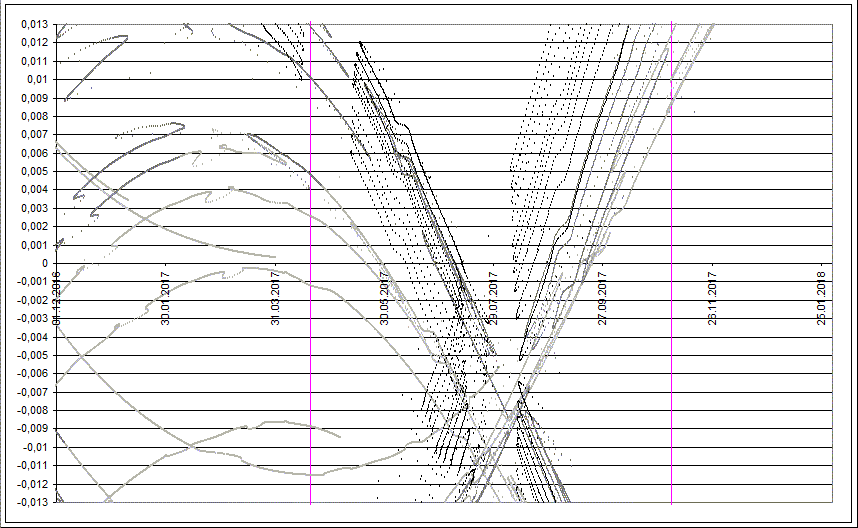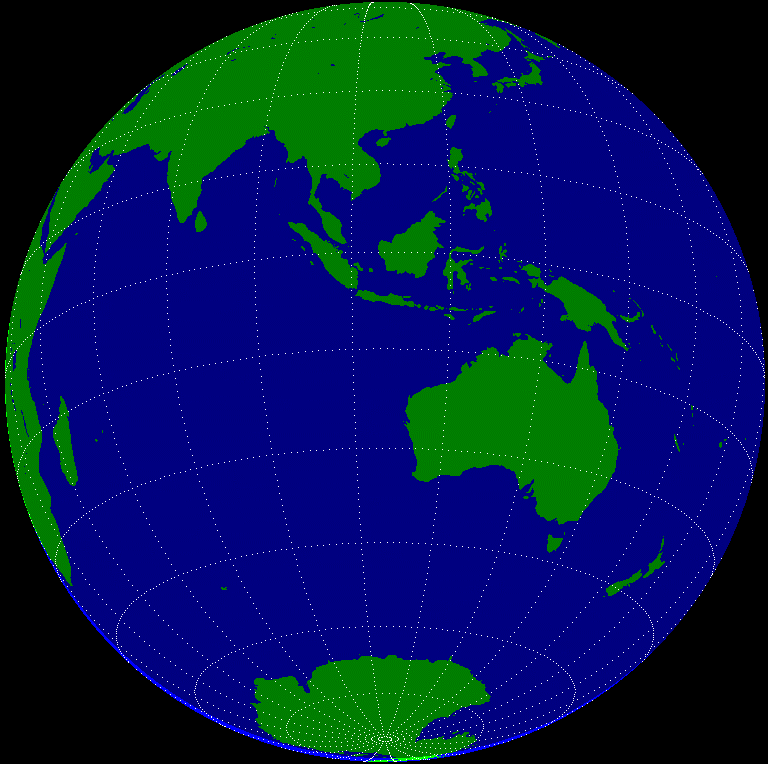249P-ids 2017: prediction of activity
to the list of predictions

Fig. 1. Space-temporal projection of 249p-ids trails parts onto their minimal distance passages in 2017 (correspondence between colours of the particles and their ejection velocities can be seen here).
In April the Earth passes near postperihelion branch of the comet 249P orbit, and in 2017 1983n trail will pass relatively close to the Earth, at 0.00124 AU. However, the characterictics of this encounter are much worse that in November 2016, as computed trail density of 1983 trail is 7.4 times lower, while ejection velocity is considerably higher. This means that any notable activity is unlikely, and would occur, if any, mostly in radio range. Computed maximum time of 16:33 UT on April 20, entry velocity is 28 km/s.

Fig. 3. The Earth as seen from coming 249p-ids meteors (RA=207.3°, Dec=-20.0°) during the peak at 16:33 UT on 20 April.
References
1. "Comet's dust 2.0" program by S. Shanov and S. Dubrovsky. [Used for orbital computations.]
2. Lyytinen E, van Flandern T. "Predicting the strength of Leonid outbursts", 2000, Icarus, P. 158-160.
3. Kasuo Kinoshita, http://jcometobs.web.fc2.com/ [Orbital elements of the comet 209P LINEAR]